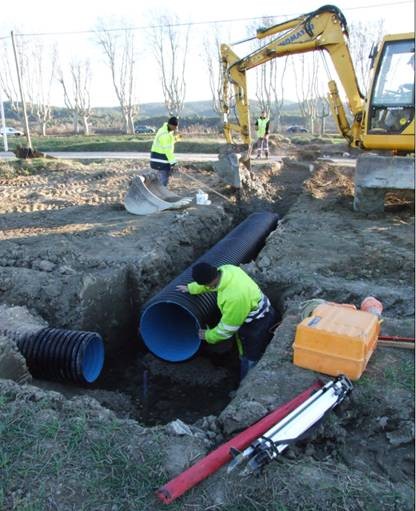ITER NEWSLINE
17
The ITinERary is being paved
Véronique Marfaing
The ITinERary is being paved

The roadworks have started near Meyrargues (Photo: Agence Iter France)
Taking these characteristics into consideration, a special itinerary involving a combination of new construction and existing infrastructure was begun in January.
Over the next year and a half, ninety different engineering operations at work sites in and around the sixteen villages along the ITER route will commence.
On 15 January work began on the 6 km segment of the route between Meyrargues and Peyrolles, involving the set up of an agricultural irrigation system.
According to Nadia Fabre, Itinerary project manager at Mission Iter: "This is the first step among many works that will be carried out by mid 2009." The enlargement of roads and roundabouts, and a retaining structure are part of this work. Each step along the Itinerary has been carefully studied to respect the environment.
During the ITER construction phase, 200 convoys, in average one every two days, will roll along the especially designed roads at a "speed" of 5 km/h up to 30 km/h.
The costs for these roadworks - almost EUR 100 million - are financed by the department Bouches-du-Rhône. During the next months 400 workers will be engaged in the Itinerary.
For more information on the ITER Itinerary, go to:
http://www.paca.equipement.gouv.fr/
Rubrique « Sites Grands Projets »
return to Newsline #17


